In my earlier article Stop and Go Traffic: A Synopsis, I examined Moving Vehicular Targets, Motion Status, To Hit Case J, and To Hit Case L. A recent discussion on the Advanced Squad Leader Discord brought up an edge case I had not considered and I wish to pass along here.
Review the Applicable Rules
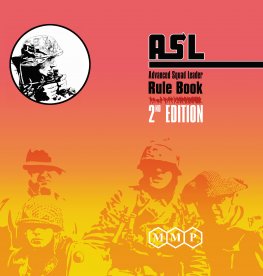
Besides C.8, D2.4, and the applicable DRMs from the C6 Target Based To Hit Determination DRM table, we will look at a Q&A from Klas’ collection and C6.1. Let’s look at these two and see how they work together.
For this discussion, imagine an AFV which has ended its turn without spending a Stop MP. It remains in Motion. Per C.8 this AFV is a Moving Vehicular Target. According to D2.4, once Immobilized, we remove the Motion counter. But how long does it remain a Moving Vehicular Target?
Enter C6.1
Per C6.1, fire at a vehicle that “is/was in Motion status during that Player Turn, must add the +2 DRM of Case J to its To Hit DR.” This means any vehicle which was in Motion during this Player Turn is a Moving Vehicular Target. Q&A supports this position.1
Per D9.31 “… a Stopped AFV or wreck which had moved/was in Motion during the current player Turn’s MPh presents a +1 Hindrance during all phases following the AFPh.” An AFV which ends its MPh in Motion and is subsequently Immobilized in Defensive Fire, is not a Moving Vehicular Target after the AFPh. Given there are no remaining fire phases in that player turn, it plays just as I suggested above. The exception, while real, is a difference without a practical distinction.
Let’s look at some examples.
Example 1
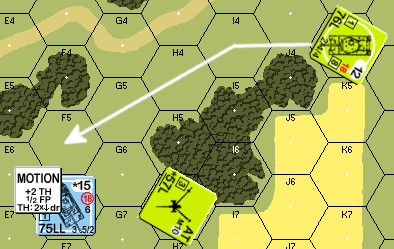
It is the American Player Turn. The Panther begins the player turn in Motion. Assume the American Gun shoots the Panther in Prep Fire, maintains ROF, and Immobilizes the Panther. Besides the -1 Acquisition for the initial shot, the Panther is now “Stopped” qualifying it as a Point Blank target. Since the Panther began the Player Turn in Motion, the AFV is still a Moving Vehicular Target per C6.1. The DRMs for the second shot are +2 Case J, -1 Case L, -1 Case N, and -1 Case P for a total DRM of -1. The Gun takes its second shot and gets no result.
It is now the American MPh. The Sherman tank moves to F5, stops, and declares a Bounding First Fire shot. Its DRMs are +2 Case B, +2 Case C, +1 Case I, +2 Case J, -2 Case L, and -1 Case P for +4 DRMs. Notice, Case J still applies here as it is the same player turn.
Wait!! What?!?!?!?!
Perhaps more interesting, once the Panther is Immobilized and no longer in Motion, it is Stopped and C5.35 no longer applies. This means the Panther does not pay Case B or Case C DRMs even though it WOULD pay those DRMs in its own player turn. This creates a very narrow instance (only a Motion vehicle and only in the enemy PFPh/MPh as B1F) where there appears to be a hole in the rules. I can see many of you out there scrambling for your rulebooks right now saying “Wait, what?!?!?”
Absent some Q&A to the contrary, there is no rule forcing a Stopped unit to pay Case B/C in the enemy player’s turn. While I don’t agree with this conclusion, the rules seem to support it once the Panther is Stopped. All references to Bounding Fire mention it taking place during AFPh. All references to Bounding First Fire mention it taking place during the AFV’s MPh. Even more strange, had the AFV remained in Motion, it would pay C4 To Hit DRMs (C5.35). I have submitted a Q&A but have not received a response at the time of writing this.
Approaching this Panther will be dangerous business.
Example 2
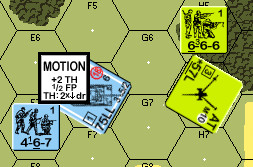
It is the German MPh in the German player turn. The Panther has moved to F6 and remained in Motion. The American Gun shoots and immobilizes the Panther keeping ROF. Recall that per C.8, the Panther remains a moving target for To Hit purposes. Any subsequent ROF shots taken by the Gun will be subject to Case J for this player turn.
Any AFPh shot taken by the Panther in this player turn is bound by Firer-Based Hit Determination DRMs Case B and Case C even though Immobilized.
Lastly, per D9.4, the Panther provides no cover to the German squad until AFTER the AFPh.
Example 3
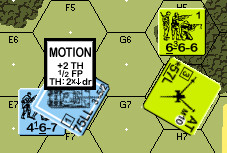
It is the German MPh. The Panther and German squad are moving using Armored Assault. If the American squad fires on the German, its fire receives + 1 Armored Assault and -1 FFNAM DRMs.
Alternatively, if the Gun fires on the German Infantry using HE equivalency, it receives the same DRMs and a -1 Case L DRM. If it fires on the AFV, the shot applies Case J DRM and no Case L.
Now imagine the American player opts to fire in the Defensive Fire Phase instead. If the American squad shoots at the German Infantry, the shot is +0 since the AFV has remained in Motion. Suppose the American Gun shoots the Panther first and immobilizes or destroys the AFV. Next, it shoots on the German Infantry. In this circumstance, the German AFV/wreck is now stopped and per the last sentence of D9.4, it continues to provide a +1 TEM during the DFPh for units that moved with it.
Conclusion
I hope you enjoyed this brief article and find it useful. I will update this article if I get a response to my Q&A, though I suspect Perry won’t make a change. The opportunities for this situation are very narrow:
- The AFV must be in Motion
- It must be the enemy’s PFPh/Bounding First Fire
- The enemy must immobilize the AFV in this PFPh
- The crew must pass its Bail Out TC
If these conditions are met, then and only then is there a hole in the rules. Even if this occurs in the enemy’s AFPh, there is no issue since the now Immobilized AFV has no opportunity to exploit this “hole”. With such a narrow “exploit”, I doubt the juice is worth the squeeze.
Until next time. — jim
version 1.1
During the friendly PFPh a Gun fires at a Motion enemy vehicle and immobilizes it, keeping ROF. It fires again at the nowstopped enemy vehicle. Does the Case J DRM now apply?
A. Yes.
A friendly squad attacks this same enemy vehicle using a MOL. Is the effects DR modified by -2 vs Moving Target?
A. No, but the MOL’s Basic TK# is reduced by 2.
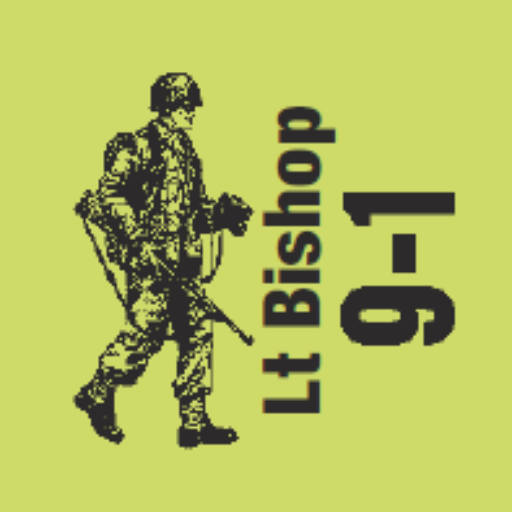

I received a Q&A from Perry confirming the conclusions of this article. I am add it here for completeness.
Email sent: Assume an AFV begins the enemy player turn in Motion. During the enemy player Prep Fire, the AFV is immobilized. Per C6.1, the AFV would still be a Moving Vehicular Target even though it is no longer in motion. Now the AFV wants to fire the MA in either First Fire or Final Fire during the same enemy player turn. Assume the AFV is CE, need not change the TCA, and there are no applicable Target-Based DRMs.
What are the DRMs for this MA shot? Does the former Motion AFV pay case B/C DRMs? C5.3 implies no but that seems odd as it would pay Case B/C if this happened in ITS MPh. — jim
Response follows:
Q. Does the former Motion AFV pay case B/C DRMs?
A. No.
I am open to suggestions for errata to address this “hole.”
….Perry
MMP